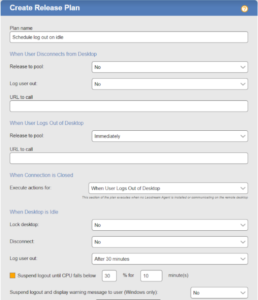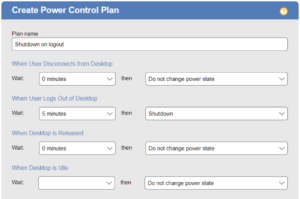Long gone are the days when your entire VDI stack had to be built and hosted in your office building. Businesses no longer need to have space and air conditioning for pallets of hardware as 3rd party datacenters become more accessible and affordable than ever before.
Of course, we can’t talk about cloud providers without mentioning Amazon Web Studios (AWS). AWS is known for, among other things, their EC2 virtual machines (VMs) which are loved by IT administrators for their flexibility, security, and high availability. The one problem every organization faces when exploring AWS is cost. The first thing most IT admins make the mistake of doing is visiting Amazon’s infamous EC2 pricing calculator. Instantly, the pricing calculator breaks their IT budget.
So, how can you keep cloud costs in check?
It’s simple, you invest in the Leostream Platform for its cost savings automation. The Leostream Platform is a comprehensive suite of tools that handles all of your connection brokering requirements.
With built in AWS integration the Leostream Platform can automate provisioning new VMs from a base image and connect you to those VMs with Amazon DCV.
While that is admittedly pretty cool, the biggest benefits of using the Leostream Platform result when the Leostream Agent is installed on the base image.
Leostream Agents provide session information back to the connection broker and that communication between Leostream tools is what makes the platform powerful. It unlocks our power control and release plans, both of which can be used to manage your AWS virtual machines and save you money.
How do release and power control plans save money?
Release and power control plans help you save money in AWS by managing the lifecycle of your virtual machines.
Release plans are targeted at ensuring the availability of your resources. For example, if a user is idle (has not touched the keyboard or mouse) for more than 30 minutes you can create a rule that sends that virtual machine back to its pool so another user can access that machine, or you can even terminate the machine. This way you ensure that you only pay for VMs when they are needed.

Power control plans function in a similar way except they power a machine off. This is vital when introducing VMs to employees who have never used them before. One common mistake for new VM users is that they close their laptop while they are actively connected to a VM. As we all know, that VM keeps on running and your compute costs keep going up. With power control plans, rules can be created to automatically power off machines no longer in use.

Together, release plans and power control plans ensure that you pay only for the compute that your employees need to be successful.
See it in action!
Nice Shoes, a tenured creative studio, has been forging a new path in the media industry by being one of the first studios to go all in with AWS. Using a combination of the Leostream Platform and Amazon DCV, Nice Shoes is providing their remote artists with graphic rich applications all without any hardware investment.
But, they must have some high performance computers to render media files overnight, right? How do you accomplish this on a virtual machine while keeping cloud costs in check?
Nice Shoes’ workflow remains the same. They still render videos overnight, with a rule instructing the Leostream Agent to monitor the machine’s CPU. After that machine falls below 30% CPU usage the VM is released to its pool and then powered off 5 minutes later. This way the artists’ render is ready for them when they connect to their VM in the morning with the added benefit that Nice Shoes only had to pay for the VM while it was running. This is just one example of how rules, set up using Leostream release and power control plans can facilitate your business needs
To learn more about how Nice Shoes was able to leverage the Leostream Platform to optimize its VDI environment check out this Case Study or contact [email protected] for a free trial!
